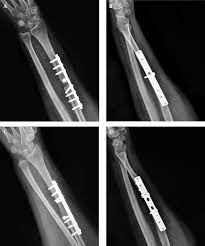
Osteoarthritis is a degenerative joint disease that causes breakdown of cartilage in the joints. It is one of the leading causes of disability worldwide affecting millions of people. While there is no cure for osteoarthritis, certain treatments can help manage the condition and relieve joint pain. Viscosupplementation is a non-surgical treatment option that involves injecting hyaluronic acid into the affected joint.
What is viscosupplementation?
Viscosupplementation, also known as hyaluronic acid injection therapy, involves injecting a gel-like substance called hyaluronic acid or hyaluronan into the knee, hip, or other joints affected by osteoarthritis. Hyaluronic acid is a glycosaminoglycan found naturally in the fluid that lubricates and cushions the joints. In osteoarthritis, there is a reduction in the amount and quality of hyaluronic acid in the joints leading to pain and inflammation.
During viscosupplementation, highly purified hyaluronic acid preparations derived from rooster combs are injected into the joint space to supplement the depleted levels of hyaluronic acid. This helps lubricate the joint, absorb shock, and protect cartilage. By replenishing hyaluronic acid, viscosupplementation therapy aims to reduce pain and improve joint function in patients with osteoarthritis.
How does it work?
Hyaluronic acid plays an important role in joint lubrication and shock absorption. It has viscoelastic properties, meaning it lubricates and cushions the joint during movement by absorbing shock waves. In osteoarthritis, the reduction in hyaluronic acid leads to deterioration of joint fluid viscosity and elasticity. This causes the cartilage in the joint to be under excessive pressure during movement resulting in pain and inflammation.
During viscosupplementation, the injected hyaluronic acid derivatives increase the viscosity of synovial fluid in the joint, helping to restore its lubricating and shock absorbing abilities. This takes pressure off the cartilage, promotes joint lubrication, and reduces inflammation. The exogenous hyaluronic acid also promotes synthesis of endogenous hyaluronic acid by synoviocytes in the joint. Over a series of injections, it aims to replenish depleted levels of hyaluronic acid in osteoarthritis and relieve associated symptoms.
Treatment protocol
A typical viscosupplementation treatment protocol involves injecting hyaluronic acid into the affected joint once a week for 3 to 5 weeks. Commonly used products include sodium hyaluronate, hylan G-F 20, and hylan A. Each 1 ml injection contains highly purified hyaluronic acid with a molecular weight and concentration mimicking normal synovial fluid.
Before the procedure, the joint area is cleaned and anesthetized using local anesthesia. Using sterile technique, the hyaluronic acid solution is injected into the joint space through a small gauge needle. Patients may feel slight discomfort during the injection which subsides quickly. After the injections, patients are advised to avoid strenuous activities involving the treated joint for a few days.
Effectiveness and results
Clinical studies have shown viscosupplementation to be an effective treatment for relieving osteoarthritis knee and hip pain. In a meta-analysis published in Arthritis & Rheumatism, hyaluronic acid injections were found to significantly reduce joint pain for 6 months or longer after injections in patients with knee and hip osteoarthritis.
Some patients report pain relief starting from 2 weeks after the first injection which increases with subsequent shots. However, results vary individually. Viscosupplementation may reduce joint swelling and inflammation in addition to improving mobility and function of the osteoarthritic joint. The benefits of therapy generally last 6-12 months before injections may need to be repeated. No serious adverse effects have been linked to hyaluronic acid injections when administered properly.
Who benefits most?
Viscosupplementation is most suitable for patients with mild to moderate osteoarthritis who have failed to get relief from other conservative measures such as physical therapy, medication, bracing or steroid injections. It works best in patients experiencing osteoarthritic symptoms for less than 5 years. Those with advanced osteoarthritis requiring joint replacement may not see as much benefit from viscosupplementation. Overall, patients who tend to experience better outcomes are those who are relatively active despite their knee osteoarthritis.
Cost and insurance coverage
The cost of viscosupplementation varies depending on the number of injections required and the hyaluronic acid product used. On average, a complete course involving 3-5 injections may cost between $500-1000 per treatment cycle. Some health insurance plans provide partial or full coverage for viscosupplementation as it can delay or reduce the need for total joint replacement surgeries in suitable patients. However, coverage policies differ between plans and it is important to check with your insurer regarding the extent of coverage. For the uninsured or underinsured, several medical financing options may be available.
Conclusion
In summary, viscosupplementation has become an established non-surgical treatment for knee, hip and other joint osteoarthritis. By restoring the lubricating and protective functions of synovial fluid through hyaluronic acid supplementation, it provides pain relief and helps manage the symptoms of osteoarthritis. When administered properly in suitable patients, it offers a safe alternative to medication and may help postpone the need for joint replacement surgery in some cases. More research is still underway to optimize viscosupplementation protocols and outcomes.
*Note:
- Source: Coherent Market Insights, Public sources, Desk research
- We have leveraged AI tools to mine information and compile it



